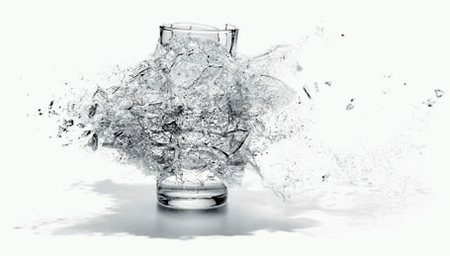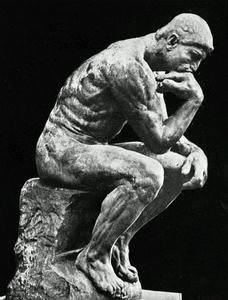How to Improve Your Self Awareness
 Self awareness:
the mental ability to recognize who and what you are - namely that
you are distinctly separate from other people and your environment.
Self awareness:
the mental ability to recognize who and what you are - namely that
you are distinctly separate from other people and your environment.
This knowledge enables you to consciously realize your own personality, feelings and desires - allowing you to have abstract thoughts about who you are, and things you have done in the past or will do in the future.
Humans have a high capacity for self awareness - though we are discovering that more animals qualify for self awareness too. It's especially helpful in lucid dreaming; converting the passive dreamer into a consciously thinking individual, with the power to explore and manipulate their dream world at will.
To be habitually self aware in waking life means to be more self aware in your dreams. This will produce many more lucid dreams because you'll be able to recognize when you are dreaming (that it is a separate place from waking reality). What's more, those lucid dreams will be more vivid and intense, more malleable and long-lasting, thanks to your heightened sense of self awareness.
Developing a more self-aware mind set doesn't happen overnight but can have a significant impact on your lucid dream life over time.
Here are five ways to improve your self awareness and become a more thoughtful observer of your reality, both while awake and while dreaming.
"We don't see things as they are, we see them as we are." ~ Anais Nin
Self-Awareness Exercise #1
Observation
Let's start with a simple observational exercise in self awareness.
Go to a quiet place - indoors or outdoors - where you can be left alone for a while with no distractions. Sit down and take some slow, deep breaths. Allow everything to slow down while you attune yourself to the environment.
Focus on what's going on around you, as opposed to what's going on inside your own head. Most of us go about our days jumping from one distraction to another and pay little attention to our surrounding environment. Instead of ignoring the background noise let's tune it in and see what it's doing.
 Look at any inanimate object that catches your gaze and that you
can see clearly. Study its shape - is it flat, straight, jagged,
curvy, round? And the texture - is it rough, smooth, rippled, soft,
hard, solid? Notice how it is hit by the light; whether it is light
or dark, dull or reflective, colorful or bland.
Look at any inanimate object that catches your gaze and that you
can see clearly. Study its shape - is it flat, straight, jagged,
curvy, round? And the texture - is it rough, smooth, rippled, soft,
hard, solid? Notice how it is hit by the light; whether it is light
or dark, dull or reflective, colorful or bland.
Now get a sense of its depth and position in space. Is it real or imaginary? In your mind's eye, isolate it from its environment completely. Imagine what exists behind the object in the space you can't see. Did it ever look different? How was it created? What will it eventually become?
Without even touching the object we now have a much more profound awareness of how it appears to us in waking reality.
This will come in very handy when you're dreaming tonight.
By paying close attention to even the blandest objects in your environment you are picking up on subtle but important clues that distinguish dreams from reality. To instinctively analyze the same object in your dream tonight would almost certainly yield a lucid dream.
Repeat this exercise with more features in your environment whenever you have a calm, reflective moment. There are no limits: you can do this exercise with a mug or with a cloudless sky. Test yourself.
For lucid dreamers, the palms of your hands are a good observational target simply because your hands are your own; they are always present in the dream world and provide the realization that you have a body - a self.
You can study your environment with any sense (sight, sound, smell, taste, touch... and beyond: temperature, pressure, weight, and so on). Use all your senses -- or use sight alone to retain your complete focus on the experience.
Sometimes though, different objects trigger different senses (eg, birdsong, distant thunder, the smell of home cooking, the touch of grass underfoot) so focus your awareness in the manner most conducive to exploring the object at hand.
Self-Awareness Exercise #2 Imagine The Impossible
This exercise is based on a well known lucid dreaming technique called reality checking or reality testing.
Take any object from the first exercise (eg, a glass of water) and, having studied and experienced it in full, now imagine the impossible. With your eyes open and looking directly at the glass, visualize it melting into the table.
Now imagine it shattering as if spontaneously fractured by a high pitched sound.
Imagine it levitating and floating an inch up in the air.
Now imagine the water coloring itself with a deep red dye.
There are countless ways to imagine the glass of water changing in unlikely or impossible ways. All these sorts of surreal events happen in dreams and by imagining them and analyzing them in reality, we trigger a level of awareness that causes us to ask the question: "This can't be real - am I dreaming?"

This exercise provides a training ground for us to stop sleepwalking through our day, study and observe our reality, and question whether it is real or not.
And when you determine your world isn't real, you become lucid...
Here's a classic lucid dream reality check that involves the hands. After studying your palms in detail as per the first exercise, try pushing two fingers from your right hand through the palm of your left hand.
Now imagine the impossible: pretend to see your fingers passing right through your palm. How does it look? How does it feel? How is it possible?
In a dream, simply expect your fingers to pass through your palm, and they will... By imagining the impossible you are teaching your mind to expect the impossible, which is essential for your reality check to prove false in the dream world.
Self-Awareness Exercise #3
Observe Your Self
The first two exercises explore our perception of the external environment. Now we'll enhance our self awareness from within.
Practice this during meditation. If you don't meditate, try this while falling asleep tonight (it's about the closest thing without calling it meditation).
If you want to start meditating on a regular basis (and I recommend you do for lucid dreaming) try listening to brainwave entrainment specifically designed to aid lucid dreaming practice.
When you are fully relaxed, lying down and with your eyes closed, focus your awareness within and ask yourself: what does it feel like to be me right now?

Just as we did with the first exercise, start with very basic awareness, such as the physical sensation of lying in bed. Is the mattress soft or firm? Are the sheets cold or warm? Rough or smooth? Does your body ache or are you completely comfortable? Do you feel heavy or light?
Then move inwards. Take some deep breaths...
Do you feel calm or stressed? Why is that?
Can you remember a time when you were MORE calm or MORE stressed? What did that calm/stress feel like?
How would you describe the feeling if you were talking to an alien who had never experienced it before? Are there different layers to this feeling? Is it tangible? Can you move it around, build it up, or sweep it away? What might it look like if you could see it?
Direct your focus to whatever emotion or state of mind you feel is strongest and probe it in every way you can think. Like manipulating putty in your hands, try to manipulate any feeling (happiness, peace, amusement, boredom, even pain) to get a better understanding of how it affects your experience of reality.
To be self aware in the philosophical sense is to recognize your feelings as they occur, to understand the impact they have, and perhaps even put them to an effective use.
When dreaming, this improvement of your self awareness will help you to recognize unusual or extreme feelings and thereby trigger lucidity.
For instance, it's quite common to have your first lucid dream via a vivid nightmare which triggers lucidity. The feeling of intense fear from being chased or attacked (or whatever your nightmare fodder) can provoke the realization: "I must be dreaming!"
Self-Awareness Exercise #4
Visualize a Dream Scene
This is a lucid dream technique that invokes a stronger sense of self awareness.
If you spend every night visualizing a dream about riding on a giant water slide made of ice cream, you'll actually dream about it sooner or later. For accomplished lucid dreamers it happens quickly because it's second nature.
Children who lucid dream frequently use this method intuitively. They'll go to sleep thinking about the amazing Candyland they just witnessed on TV and it'll suddenly become their next dream reality.
Not knowing any better, they assume everyone does this...

The technique of "daydreaming yourself to sleep" is straight forward in its essence but there are tricks to enhance the process and make it more effective.
So what's the best way to visualize a dream scene so it plays out sooner?
First, visualize in vivid detail, engaging as many senses as possible. Trick your brain into believing that the experience has actually happened.
To your brain, the neurons fired during the experience of eating a gourmet burger are exactly the same neurons fired when you vividly imagine or dream of doing it. And since our dreams are mostly replays of real-world experiences, we can program our dreams by simulating real-world experiences in our minds.
Tonight as you fall asleep, put your awareness inside a desirable dream scene and explore every element with your senses. Don't worry about planning the sequence of events so much as setting the opening scene.
To enhance the visualization further, attach an emotion to it. You are more likely to dream of an event if it was particularly emotional.
Unfortunately, negative emotions seem to penetrate our dreams more easily. Horror movies can so easily trigger nightmares in some people, but for most it takes extreme situations like grief or trauma to noticeably penetrate our dreams. The effect can be powerful and even lead to recurring nightmares. This all supports the theory that dreams are a psychological healing ground.
Nonetheless, many lucid dreamers incubate using only positive emotions, such as a deep desire to experience a particular dream event. There is no need to spook yourself or re-live bad memories for this exercise.
Here's an example of an effective incubation: visualize that you are standing on top of the Empire State Building with someone who means a lot to you. It is night time and the city is lit up. Observe the world below before jumping, weightless, into the air and soaring over the city. Fly!
Self-Awareness Exercise #5
Practice Self-Awareness in Dreams
So far all the exercises take place in the waking world.
This one is for when you're next inside a lucid dream.
Using a combination of outside observation, reality checking, and exploring your own inner awareness, you're going to maximize your self-awareness when lucid.
From the moment you become lucid, start exploring your dream world. Look around you, turning 360 degrees slowly, before selecting an interesting target. It may even be your own hands.
Study the object in detail, scrutinize its shape, texture, color, and so on.
Then expect it to grow or shrink (it will!)
Push your awareness into the object and observe it from the inside.
Expect the impossible... then see it happen.

Now ground yourself by observing your own thoughts and feelings within the dreamworld. Are you happy? Excited? Playful? Can these feelings become tangible?
Of course! You are dreaming...
There are an unlimited number of ways to probe your lucid dream world, to see how it reacts to you and vice versa.
By staying lucidly focused and in the moment you'll enhance your lucidity as you go, significantly prolonging your lucid dream and thereby training your mind to have more lucid dreams in future...
















